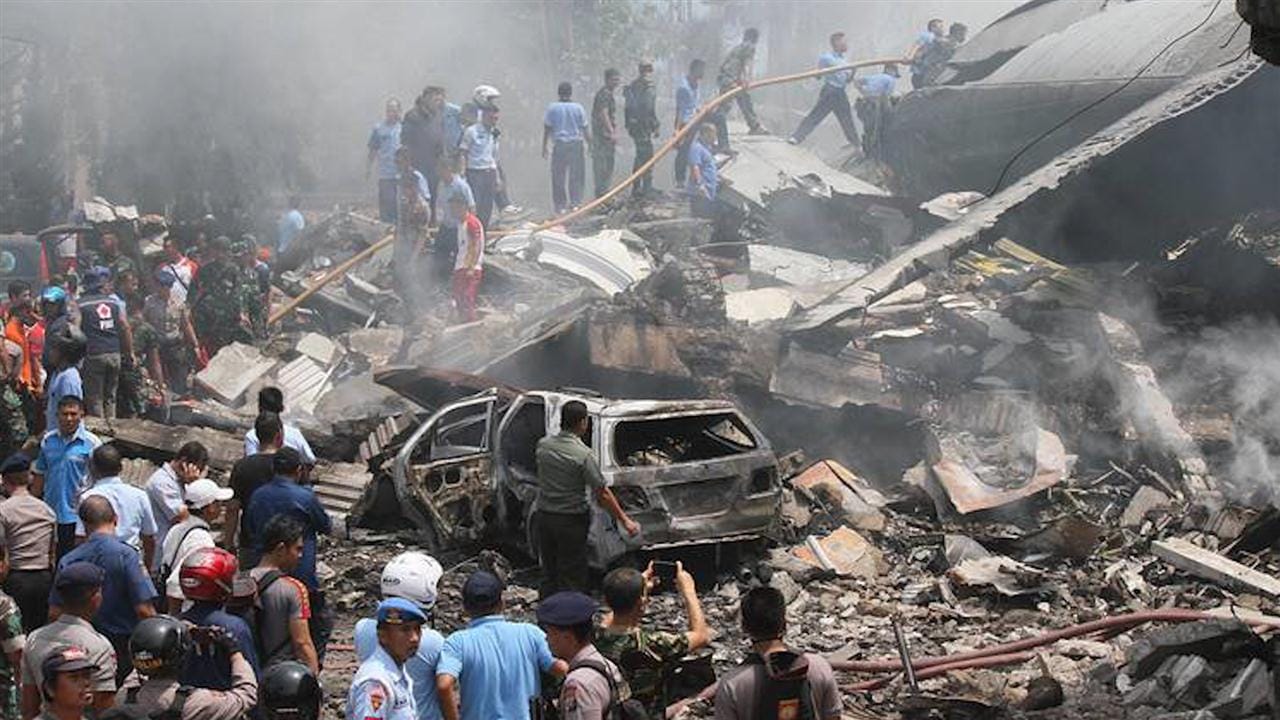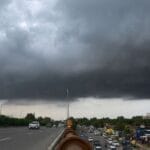In a tragic incident that has sent shockwaves across Bangladesh, a Bangladesh Air Force training aircraft crashed into a school compound in Dhaka on July 20, 2025, killing at least one person and injuring several others. The crash occurred in a densely populated residential area, raising serious concerns about aviation safety protocols and emergency preparedness in urban regions.
This blog details the circumstances of the accident, the rescue operations, eyewitness accounts, expert analyses, and the government’s response to this devastating event.
How the Crash Happened: Timeline of Events
At approximately 10:45 AM local time, residents of Uttara Sector 12, a crowded neighborhood in Dhaka, heard a loud explosion followed by billowing smoke rising from the Model Shishu Niketan School premises.
Initial reports suggest that a Bangladesh Air Force K-8W Karakorum trainer jet, which had taken off from Tejgaon Air Base minutes earlier for a routine training sortie, developed a mechanical fault mid-air. Eyewitnesses reported the aircraft flying unusually low before spiraling out of control.
The pilot attempted to steer the failing aircraft away from densely populated zones but ultimately crashed into the school’s assembly area, which was thankfully unoccupied at that moment due to ongoing school holidays.
Casualties and Injuries
According to the Bangladesh Air Force (BAF) and the Dhaka Metropolitan Police:
- One civilian was confirmed dead, a 32-year-old school maintenance worker present near the assembly area at the time of impact.
- Six others sustained injuries, including two school staff members and four local residents injured by falling debris and secondary explosions.
The pilot and co-pilot of the jet successfully ejected using parachutes moments before impact and were recovered by rescue teams with only minor injuries.
Immediate Rescue and Emergency Response
Following the crash, the Bangladesh Fire Service and Civil Defence, along with military personnel, rushed to the site within minutes. Key actions included:
- Securing the crash zone to prevent civilian entry.
- Extinguishing fires from the aircraft wreckage.
- Conducting search and rescue operations in the school premises and nearby buildings.
- Evacuating local residents to prevent inhalation of toxic fumes.
- Providing first aid and emergency medical treatment to the injured.
The entire area was cordoned off for public safety, and aerial surveillance was initiated to detect possible fuel leakages or secondary hazards.
Eyewitness Accounts
Residents of Uttara Sector 12 described the terrifying sequence:
“We saw the aircraft flying very low, almost grazing rooftops. Suddenly, there was an explosion and the plane went straight down. Thick black smoke covered the area within seconds,” said Rafiqul Islam, a local shopkeeper.
“I heard the crash and ran towards the school. There was debris everywhere. We could see parts of the plane’s wings scattered inside the school compound,” recounted Shamsunnahar, a nearby resident.
Aircraft Involved: K-8W Trainer Jet
The aircraft involved was a K-8W Karakorum, a two-seat intermediate jet trainer aircraft jointly developed by China’s Hongdu Aviation Industry Group and Pakistan Aeronautical Complex. Widely used by the Bangladesh Air Force for pilot training missions, the K-8W is designed for reliability and ease of maintenance.
However, this incident raises serious questions about:
- Maintenance protocols
- Pilot training for emergency situations
- Safety regulations for flight paths over populated areas
Bangladesh Air Force Official Statement
In a press briefing, Air Vice Marshal Mohammad Abu Zafar, spokesperson for the Bangladesh Air Force, stated:
“A BAF K-8W aircraft on a routine training sortie encountered technical difficulties and crashed inside a school compound in Uttara, Dhaka. We regret to confirm one civilian fatality and multiple injuries. An internal investigation board has been formed to ascertain the exact cause of the accident.”
He assured that all training flights have been temporarily suspended pending technical inspections.
Government and Political Response
The Prime Minister of Bangladesh, Sheikh Hasina, expressed condolences to the victim’s family and ordered:
- Immediate financial assistance for the affected families.
- A high-level investigation into the cause of the crash.
- Strict action if any lapses in maintenance or pilot training are found.
The Education Ministry has directed schools located near airports and airbases to conduct safety audits to ensure student safety.
Aviation Experts Weigh In
Aviation analysts note that while the Bangladesh Air Force maintains a solid safety record, flying over densely populated cities like Dhaka poses inherent risks.
“Older aircraft models used for training often face higher mechanical failure rates. Regular overflights in residential areas significantly increase risk during emergencies,” said Aviation expert Mahbub Hossain.
He added that other nations enforce stricter no-fly zones over schools, hospitals, and residential zones, and Bangladesh may need to revise its air safety regulations accordingly.
Public Reaction: Fear and Demands for Accountability
The crash has triggered public outcry:
- Parents of schoolchildren expressed fear over airbases located near residential zones.
- Locals have demanded the relocation of military airbases away from populated cities.
- Social media is flooded with demands for a transparent investigation and public safety assurances.
Historical Incidents: A Pattern?
While air crashes in Bangladesh are relatively rare, there have been similar incidents:
- 2018: US-Bangla Airlines crash in Kathmandu killed 51 people, sparking aviation safety concerns.
- 2015: A BAF Yak-130 training aircraft crashed into a field in Jessore due to engine failure; both pilots survived.
- 2022: A BAF PT-6 aircraft crash-landed near Chattogram; no fatalities occurred.
These incidents highlight systemic issues in aviation maintenance and emergency response strategies.
Safety Measures Going Forward
Experts recommend:
- Relocation of flight training operations to less populated regions.
- Mandatory maintenance audits of aging aircraft.
- Implementation of stricter flight route regulations over urban areas.
- Modernization of training fleets to newer, more reliable aircraft models.
Conclusion: A Wake-Up Call for Aviation Safety
The tragic Bangladesh Air Force jet crash in Dhaka serves as a grim reminder of the potential consequences of operating military training flights over crowded urban landscapes. While the quick action of rescue teams prevented larger-scale casualties, the death of one civilian and injuries to several others have sparked national mourning and demands for accountability.
As the investigation proceeds, Bangladesh’s defense authorities and civil aviation bodies must prioritize public safety, enforce stricter regulations, and ensure such an incident is never repeated.
Frequently Asked Questions (FAQs)
Q1. What type of aircraft crashed in Dhaka?
A Bangladesh Air Force K-8W Karakorum trainer jet crashed.
Q2. Were there casualties?
Yes, one civilian was killed, and at least six others were injured.
Q3. Did the pilots survive?
Yes, both pilots ejected safely and suffered minor injuries.
Q4. Why did the aircraft crash?
Initial reports suggest mechanical failure, but a full investigation is underway.
Q5. What safety actions has the government taken?
Training flights are temporarily suspended, and a high-level probe has been launched.










